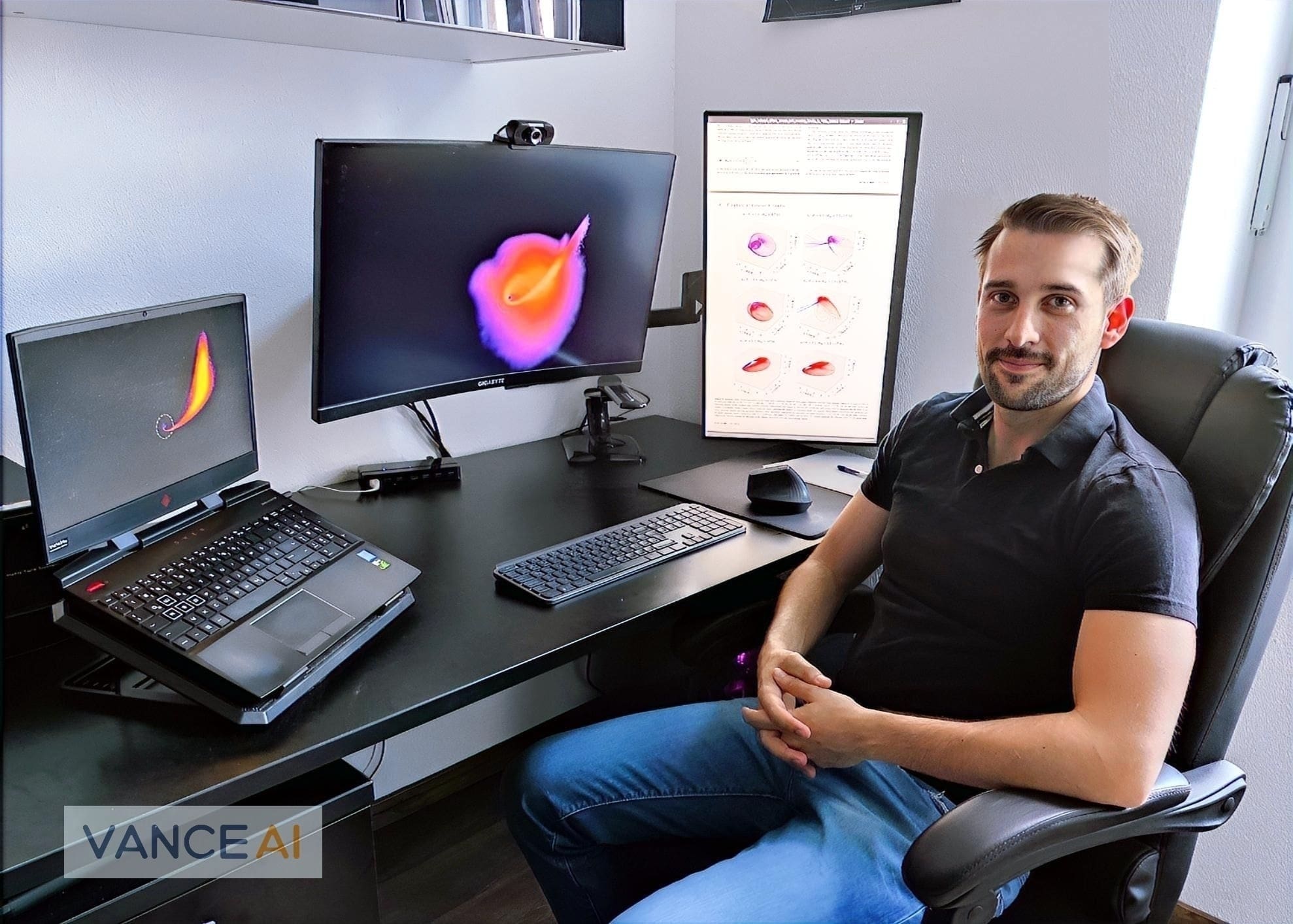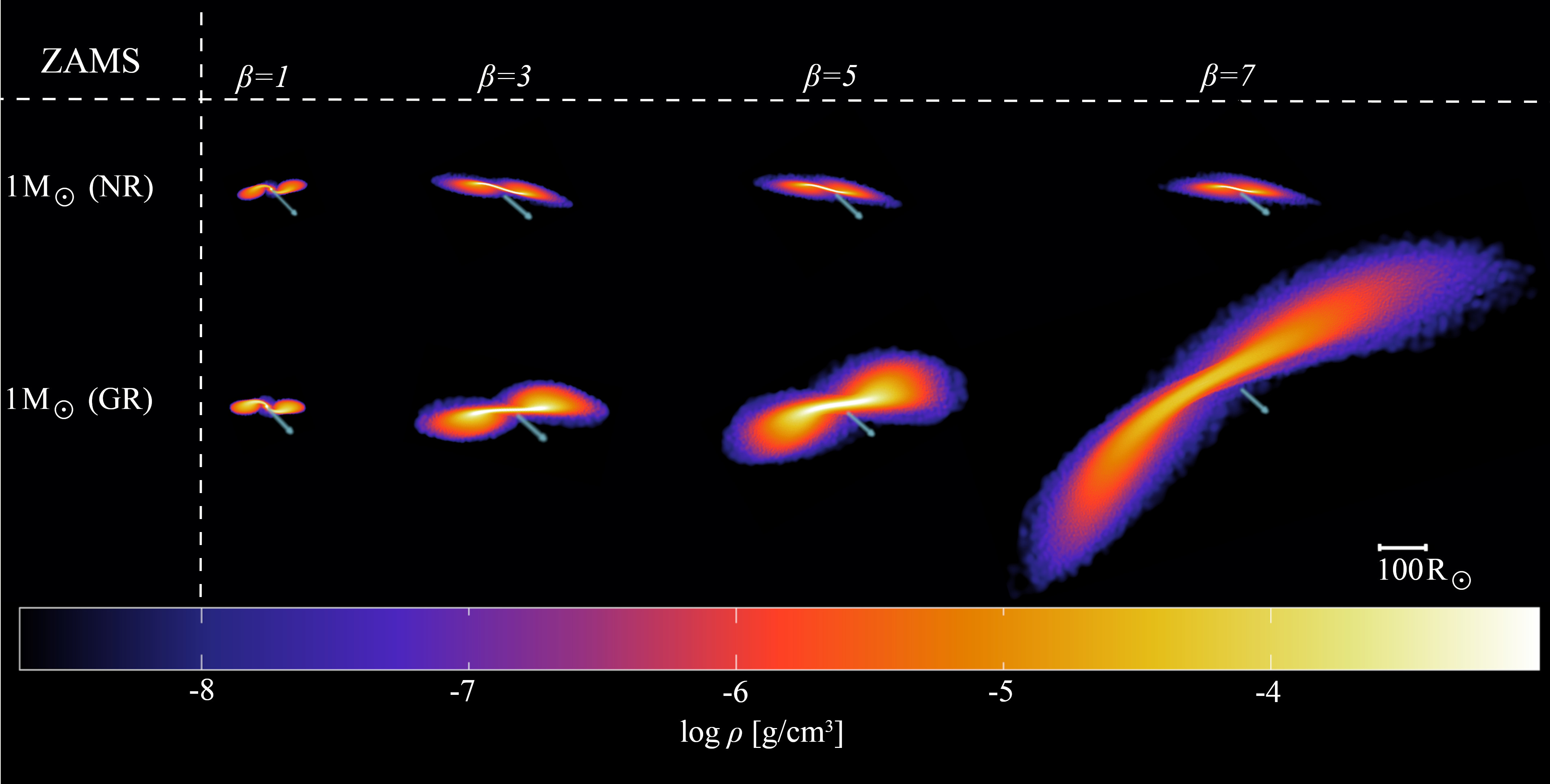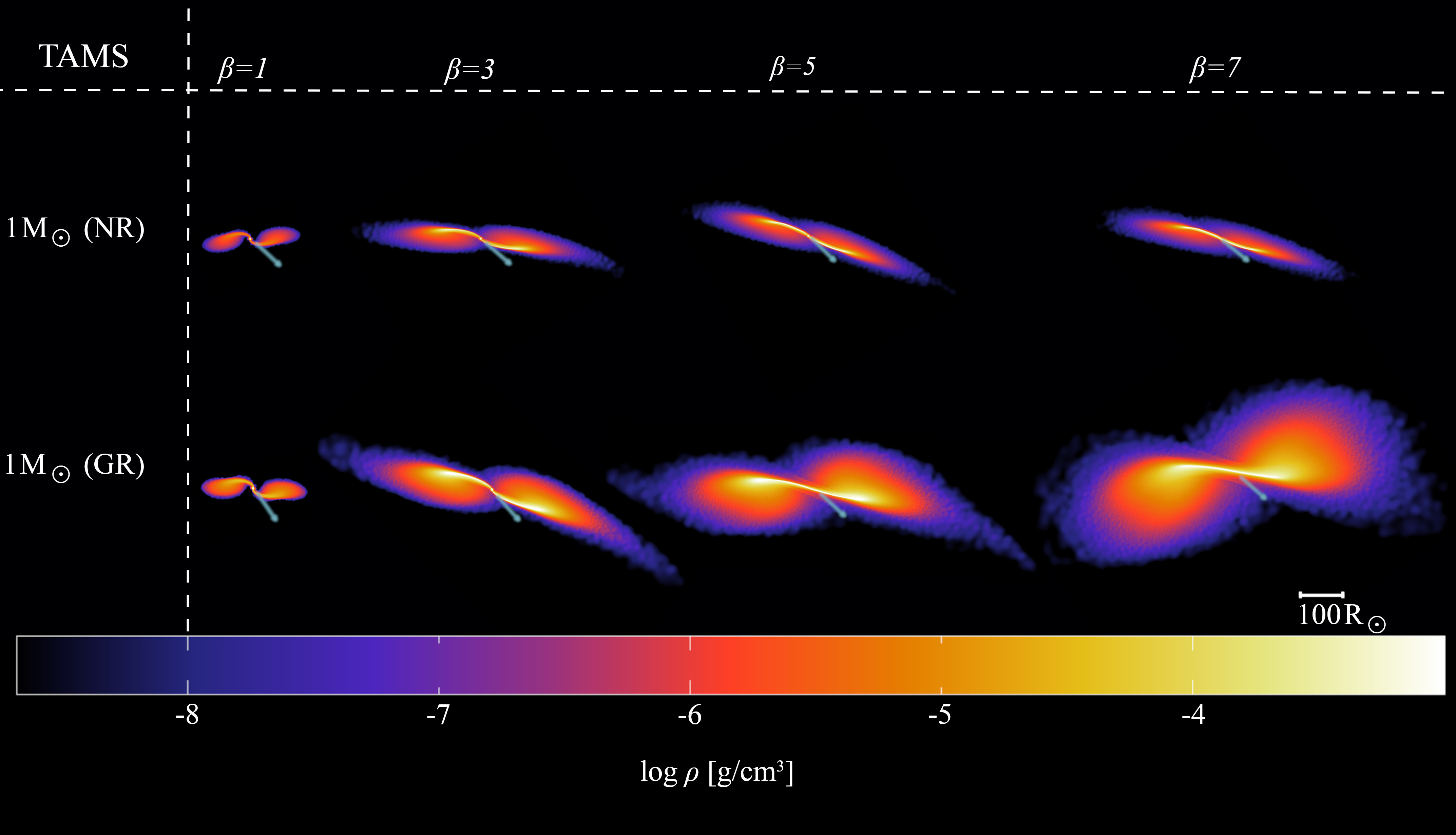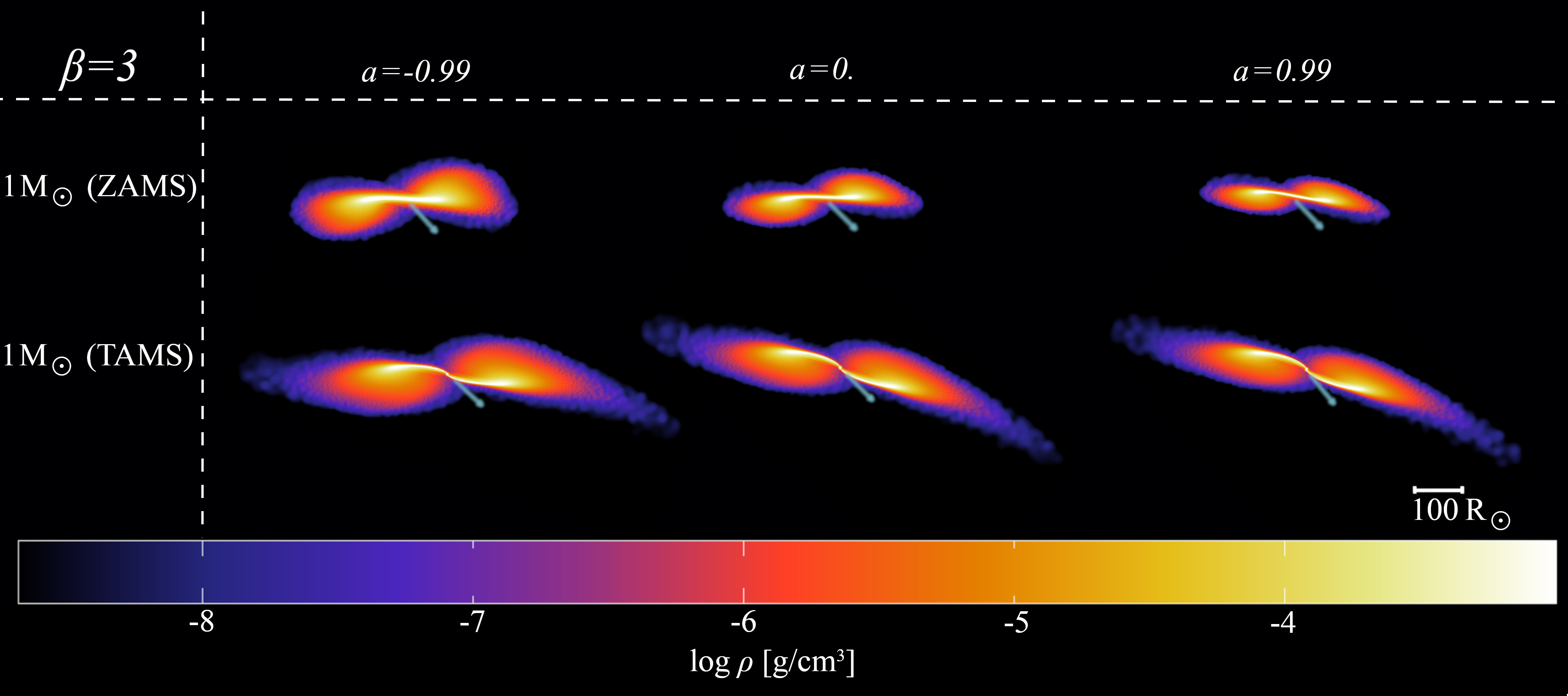About
I am an assistant researcher at the Center for Astrophysics and Cosmology and School of Science, University of Nova Gorica, Slovenia. In August 2023, I successfully defended my PhD thesis titled "Relativistic tidal disruptions of realistic stars by supermassive black holes", conducted under the supervision of Prof. Dr. Andreja Gomboc (University of Nova Gorica, Slovenia) and Asst. Prof. Dr. Clément Bonnerot (University of Birmingham, UK). Prior to this, I completed my Master's degree at the Faculty of Mathematics and Physics, University of Ljubljana, Slovenia. My main field of research is the tidal disruption of stars in the vicinity of massive black holes. In addition, I teach undergraduate-level astrophysics courses and regularly participate in outreach activities.

Assistant Researcher
- Degree: PhD
- Email: taj.jankovic@ung.si
- City: Ajdovščina, Slovenia
I am always available for interesting discussions about black holes and high-energy astrophysical phenomena.
Resumé
A detailed PDF of the CV can be found here.
Education
Research assistant
2023 -
University of Nova Gorica, Ajdovščina, Slovenia
PhD Student
2019 -2023
School of Science, Ajdovščina, Slovenia
Master's Degree in Physics
2016 - 2019
Faculty of Mathematics and Physics, Ljubljana, Slovenia
Bachelor's Degree in Physics
2012 - 2016
Faculty of Mathematics and Physics, Ljubljana, Slovenia
Experience
Computer Skills
Advanced: Python, Phantom, MESA2HYDRO, LaTex
Intermediate: MESA, Fortran 90, Mathematica, Excel
-
Basic: C, Adobe Photoshop, Iraf
Recent International Conferences and Workshops
LSST conference: Contributed talk, "Spin-induced offset stream self-crossing shocks ", Poreč, 2023
Mini-TDE Workshop: Contributed talk, "Spin-induced offset stream self-crossing shocks ", Columbia University (New York, USA), 2023
GAIA Workshop: Contributed talk, "The mass fallback rate of the debris in relativistic stellar tidal disruption events", University of Coimbra (Coimbra, Portugal), 2022
Recent publications
My research has led to the following recent publications. A full list of my publications can also be found here or on ADS there.
“Spin-induced offset stream self-crossing shocks in tidal disruption events” (ADS/ Astro-ph), Jankovič T., Bonnerot C., Gomboc A., 2023, submitted to MNRAS
“The Mass Fallback Rate of the Debris in Relativistic Stellar Tidal Disruption Events ” (ADS/ Astro-ph), Jankovič T., Gomboc A., 2023, ApJ, 946, 25
Research
My research focuses on the study of stellar tidal disruption events (TDEs), where a star is disrupted by the strong tidal forces of a supermassive black hole (SMBH). These events generate transient emissions that have been observed on numerous occasions, and the rate of detections is expected to increase even further with the aid of high-cadence observational facilities. The transient signal from TDEs provides a unique opportunity to study SMBHs, stellar dynamics in galactic nuclei, and to gain insights into accretion physics. To fully utilize TDEs as a tool for understanding astrophysical phenomena, it is essential to conduct more focused research on the dynamics of the stellar debris and the radiation it generates. This will provide a more comprehensive understanding of the observational signatures of TDEs, which can be used to make more accurate predictions about associated astrophysical processes.
Since 2019 I have mainly focused on two projects related to hydrodynamic simulations of TDEs with the smoothed-particle hydrodynamics code Phantom.
Study of the outflow from the self-crossing region (Jankovič et al., 2023), a region where the part of the stream that has passed the pericenter collides with the still in-falling gas. This collision leads to a self-crossing shock, which can trigger accretion disc formation. If the black hole rotates, the additional Lense-Thirring precession induces an offset between these two colliding components, which can affect the outcome of the interaction. I studied the effect of the black hole’s spin by locally simulating collisions between two offset streams. I found that the geometry of the outflow becomes less spherical and more stream-like as the vertical offset increases, due to less energy being dissipated when the streams only partially collide. This effect may enhance the self-crossing shock luminosity due to a reduction of adiabatic losses, and cause significant variations of the efficiency at which X-ray radiation from the disc is reprocessed to the optical band depending on the viewing angle. These potentially observable features hold the promise of constraining the black hole spin from tidal disruption events.
-
The mass fallback rate of the debris in relativistic disruptions of realistic stars (Jankovič & Gomboc, 2023). The debris fallback rate is the rate at which the bound debris returns to the proximity of the SMBH after the disruption, and is often assumed to be directly related to the observed light curve of TDEs. For this purpose, I simulated disruptions of realistic stars, constructed with the code MESA, for different stellar and orbital parameters, and calculated the fallback rate. By taking into account both the general relativity and realistic stellar structure this work is currently the most accurate study of the debris fallback rate.
Gallery
Here you can find images and movies related to different research projects (list of publications available here).
Spin-induced offset stream self-crossing shocks in tidal disruption events
(ADS/Astro-ph)
Tidal disruption events occur when a star is disrupted by a supermassive black hole, resulting in an elongated stream of gas that partly falls back to pericenter. Due to apsidal precession, the returning stream may collide with itself, leading to a self-crossing shock that launches an outflow. If the black hole spins, this collision may additionally be affected by Lense-Thirring precession that can cause an offset between the two stream components.
The video below shows a collision between non-offset streams in the strong collision regime.
The video below shows a collision between offset streams in the strong collision regime.
The video below shows a collision between offset streams in the grazing collision regime.
The mass fallback rate of the debris in relativistic TDEs
(ADS/Astro-ph)
Highly energetic stellar tidal disruption events (TDEs) provide a way to study black hole characteristics and their environment. We simulate TDEs with the Phantom code in a general relativistic (GR) and Newtonian description of a supermassive black hole's gravity. Stars, which are placed in parabolic orbits with different $\beta$ parameters, are constructed with the stellar evolution code MESA and therefore have realistic stellar density profiles. We study the mass fallback rate of the debris $\dot{M}$ and its dependence on the $\beta$, stellar mass, and age as well as the black hole's spin and the choice of the gravity description. The Figures below show density slices of the TDE simulations of $1\,\mathrm{M_\odot}$ stars at $\approx 15\, t_\mathrm{dyn}$ after the pericenter passage. The arrows indicate the direction to the black hole. We rotate slices of the debris configurations so that the directions toward the SMBH are aligned.
Figure below shows density slices of ZAMS stars after disruption by a nonrotating SMBH with a Newtonian (first row) and a GR (second row) description of gravity.

Figure below shows density slices of TAMS stars after disruption by a nonrotating SMBH with a Newtonian (first row) and a GR (second row) description of gravity.

Figure below shows density slices of ZAMS (first row) and TAMS (second row) stars after disruption by a rotating SMBH for $\beta=3$.

Various movies
Disruption of a Sun-like star initially on an elliptic orbit with $\beta=5$, $e=0.95$ by a supermassive black hole with $M_\mathrm{bh}=10^6\,\mathrm{M_\odot}$.
Current teaching
I am a teaching assistant in Bachelor-level course Stellar Astrophysics 2 at the School of Science, University of Nova Gorica, Slovenia.
Previous teaching
Previously, I was a teaching assistant in Bachelor-level course Stellar Astrophysics 1 at the School of Science, University of Nova Gorica, Slovenia.
Outreach
I regularly participate in events that involve delivering informative astrophysics lectures for the general public. A PDF containing information on these public lectures and interviews can be found here.
Selected public appearances
Contact
I am always available for interesting discussions about black holes and high-energy astrophysical phenomena.
Email:
Call:
+386 5 3653 535
Location:
Vipavska cesta 11c, 5270 Ajdovščina, Slovenia
